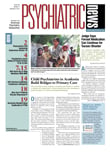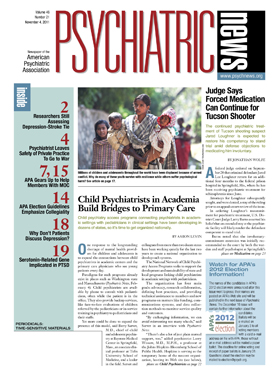Why do some people develop posttraumatic stress disorder (PTSD) when others exposed to the same trauma do not? Studies show that genetic factors interact with trauma to determine who will develop PTSD, but the mechanism for this heritability has been unknown.
Researchers at Emory University and Northern Illinois University used a unique opportunity to explore that mechanism. On February 14, 2008, a lone gunman went on a shooting spree on the campus of Northern Illinois University in Dekalb, killing five and wounding 21 before committing suicide.
At the time of the shooting, 1,045 undergraduate women had completed the first phase of a longitudinal study examining predictors of sexual revictimization; participants were not selected based on victimization history and needed only to be 18 years of age and fluent in English to participate.
Seventeen days after the shooting, the researchers launched a follow-up survey of those same participants that included newly added trauma-related measures including PTSD symptom severity; 691 agreed to participate in this second phase. Data were collected again through online surveys 34 weeks, on average, after the campus shooting. In fall 2009, salivary samples were collected to obtain DNA from 276 subjects of the original study population based on willingness to participate.
Using these prospective psychological data, combined with salivary samples of students' DNA, the researchers examined the link between polymorphisms within the serotonin transporter gene promoter region and PTSD/acute stress disorder symptoms that developed in the aftermath of exposure to the shooting.
They were able to identify a serotonin transporter genotype associated with significantly increased acute stress disorder symptoms at two to four weeks after the incident. The association remained significant when controlling for race and for level of shooting exposure, which was assessed using a 12-item measure of exposure modified from that developed by Littleton and colleagues following the mass shooting at Virginia Tech.
"When examined in a relatively homogenous sample with shared trauma and known prior levels of child and adult trauma, the 5-HTTLPR multimarker genotype may serve as useful predictor of risk for PTSD-related symptoms in the weeks and months following the trauma," they wrote online September 5 in the Archives of General Psychiatry. Their data suggest that differential function of the serotonin transporter may mediate responses to severe trauma.
The researchers pointed to sample size as an important limitation of their study, but said that they continue to make efforts to genotype more members of the study sample. "Most prospective, shared trauma disasters will likely share similar sample size limitations," they pointed out.
"The examination of a population for whom we had information on prior trauma and PTSD symptoms before the trauma occurred allowed for a unique prospective gene-environment study," they said. "Definitive clarification of the role of genetic heritability in the prediction of risk for psychopathology will not be possible without such prospective and retrospective approaches."
This research was funded by grants from the Joyce Foundation and the Burroughs Wellcome Fund and by grants from the National Institute of Child Health and Human Development and National Institute of Mental Health.
An abstract of "Acute and Posttraumatic Stress Symptoms in a Prospective Gene x Environment Study of a University Campus Shooting" is posted at <www.ncbi.nlm.nih.gov/pubmed/21893641>.


